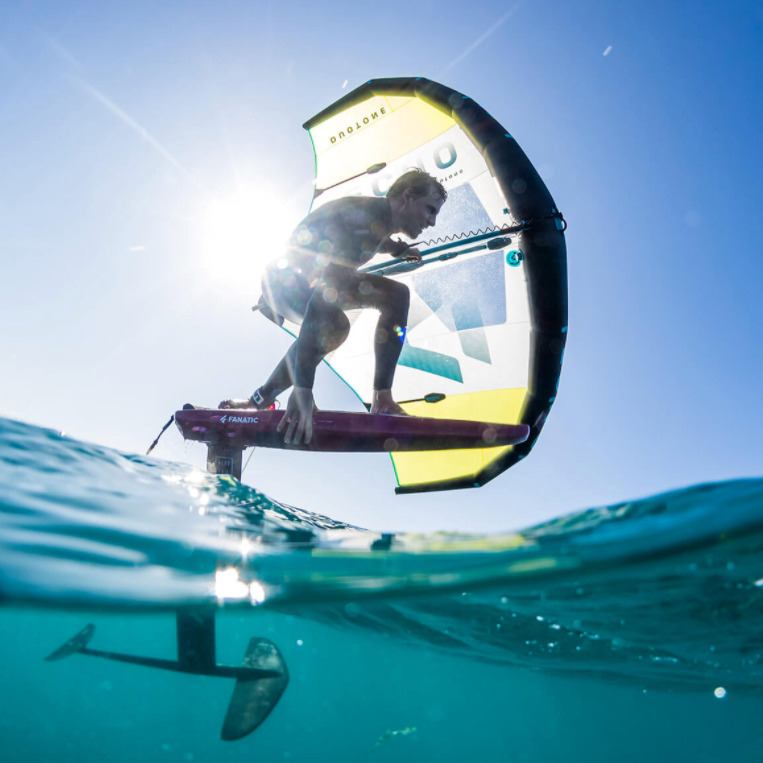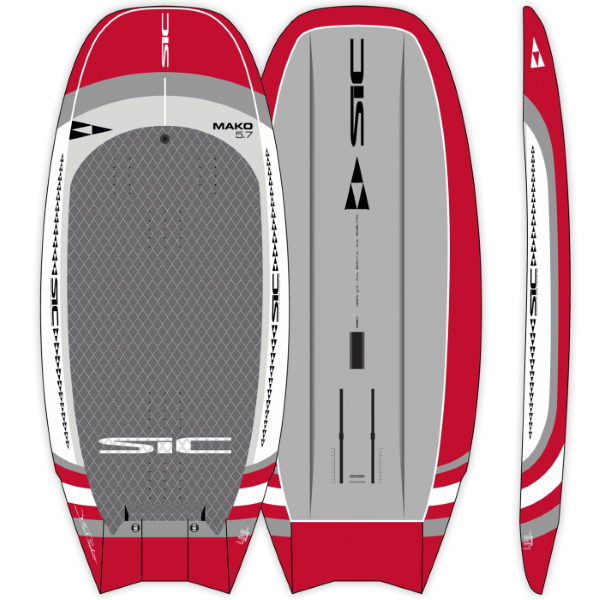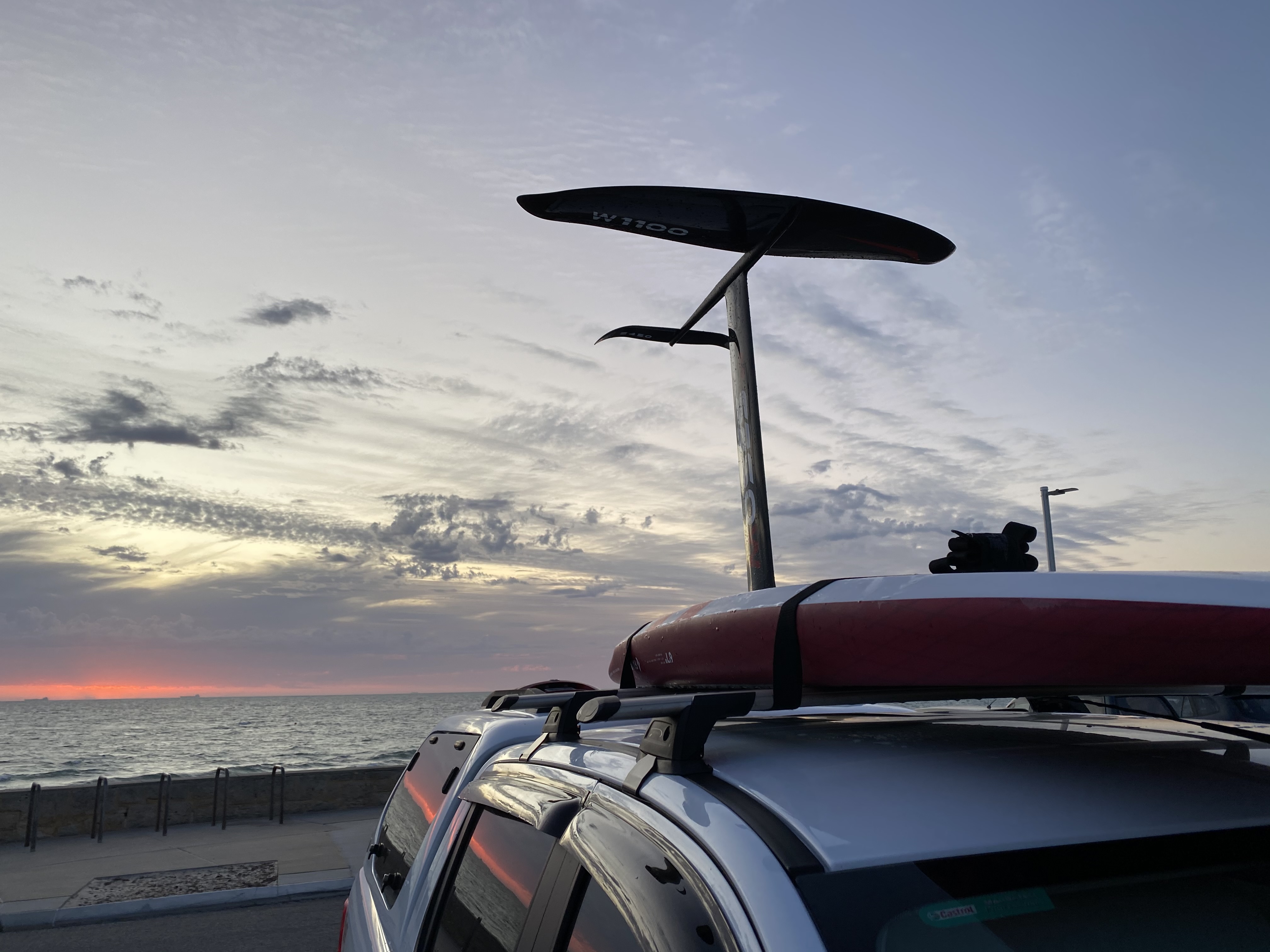HOW TO START DOWNWIND WINGFOILING
HOW TO START DOWNWIND WINGFOILING
I have been Wingfoiling since 2019 and having given most aspects or disciplines a good go. I have come to the decision that, I love Surf Wingfoiling and Downwind Wingfoiling the most. I mean to say, these two disciplines are so good, that I am happy to forgo ’mowing the lawn’, Flat Water Wingfoiling, Light-Wind Wingfoiling, Freestyle Wingfoiling and even Wingfoil Racing.
The challenge we have here in Perth is that there are few waves worth foiling, and fewer easily accessible without getting boats or jet skis involved. This makes the whole setup and pack down difficult for anything but a weekend day. So, this leaves my favourite pursuit, Downwinding!
Downwind Wing Foiling is as the name describes, foiling downwind (going in the same direction as the wind) while using a wing for propulsion when there isn’t a wave to ride. The art in “Downwinding” is to use the wing to propel you offshore to a point where the ocean chop or wind generated waves, are big enough to foil surf them.
Once you are out far enough to catch the usually sizable waves, the idea is to use the wind wing as little as possible and use the foil to surf the waves downwind with the board aloft supported by the foil. The wing is then “flagged” or “drifted” along in a neutral state, not producing any power, whilst letting the wave and foil do all the work. This is the “Glide.” Once the glide ends, or the wave peters out, you either pump the foil to the next wave, or you can grab the wing and power it back up, keeping you on the foil whilst you look for your next free glide.

Foil surfing waves generated by wind is much more difficult than wave surf foiling in a few ways. For one, the waves are faster moving, rapidly changing, and hold no clearly defined form. This is not to say that downwind chop has no shape, it does, but much of what a beginner will observe is complete chaos, there are patterns to it, just with lots of anomalies which massively change the speed, height, depth of troughs, frequency, and cross swell intersections. Usually when we downwind, it is in a northerly direction with a South to Southwest wind pushing us.
Groundswell comes from the Southwest to West Southwest most of the time during Summer. What this does is set two distinct directions of wave which can vary from 15 degrees to as much as 45 degrees in relation to one another at intersection.
For the beginners, this is chaotic and difficult to predict, to navigate and to plan where to go.
This results in “reactive” riding with lots of crashes and falls. But as a more experienced downwind wing foiler, this presents opportunity! Walls, berms and drops with which to change direction, accelerate and find new and exciting pathways to carve and glide your way downwind. Chasing the ever-changing shapes to increase speed and direction. The intersection of the two directions of waves can double the wave height, the trough depth or can do the complete opposite and fill in.
Wind generated chop waves run at different speeds to ground swell and the ‘fetch’ is completely different. This means a wave that looks small to medium once you take off on it, can suddenly drop away beneath you giving a split second to react to get your foil pointed down to follow the fast-disappearing surface beneath you. If you get it right the reward is instant speed, an adrenaline rush, and fun. True free form Soul surfing!
Downwind Wingfoiling conditions
“Downwinding” requires a good stiff breeze of a minimum twenty knots, or preferably stronger. The wind strength is not for the power to go, we can foil in much, much less wind, it is the sea state that is created by the wind which makes the wind speed more critical. It is possible to downwind in fifteen knots, but the waves do not build to sufficient size and power to really get the foil providing 100% propulsion.
Wind direction needs to be side to side-on, or parallel to the beach to 45 degrees angle to the beach. Any more than 45 degrees to the beach and it is too onshore to downwind. Although our wind requirements are quite specific, Perth has so many of these days of S-SW at 18+ knots of wind throughout October to March, making this one of the best cities in the world. Our perfect sandy beaches and a long coastline allow Downwind runs up to 35km in the metro area.
How to begin Downwind Wingfoiling
To begin Downwinding on a wing foil you will need to have good experience foiling on flat water. You do not necessarily need to be confident at gybing, tacking or even feet switching (but it helps!). You need to be able to easily do deep water starts and be able to foil without touching down on the board or breaching the foil for 500m. If you are still falling a lot in flat water, you are not ready to downwind on a foil, yet.
Once you are at that minimum level of proficiency and you feel like a new challenge, join us in our new Facebook Group “Perth Downwind Wingfoil Crew.” We are a collective of Surfers and Wingfoilers that meet up and organise downwinders any time with wind is blowing in our favour.
PDWWFC will be running shorter more sheltered downwind runs to allow newbies to DW and learn the skills in an easier, less threatening environment with some coaching and mentoring, not to mention a sharing of the car coordination issue.
The Right Gear to Learn Downwind Wingfoiling
If you have ever seen any pics or video of people Downwinding on wing foiling gear, you will no doubt have seen tiny boards, long masts and super high aspect borderline race wings on the foils and the latest and greatest wings on the market. Trying to emulate this gear approach will seriously hamper your progress to learn this aspect of the sport.
The Board
The right board for Downwind Wingfoiling is going to have at least 25% more volume in litres than your body weight in kilo’s, being longer and wider than you would use on flat water will be an advantage.
If it is big and stable, and long enough to allow you to build up speed on the surface to make the transition to foiling happen easily, you will use less physical effort and transition with better control onto the foil.
A 6’0 board will be stable in an unstable environment, allowing you to water start relatively easily. This is critical as the wind required to downwind can create ocean conditions that contribute to many falls. This in turn requires many water starts and wrestling the wing into position for a start. This is enormously physically demanding part of wing foiling downwind.
So, the more you fall, the more exhausted you get, leading to more falls and rapidly waning energy. This coupled with a long downwind run can leave you exhausted only halfway down the run and no way to get back to your car. The board is potentially the most important piece of gear when learning Downwinding. I first learned on a Fanatic Sky SUP 6’7” SUP foil board of 125 litres when I was 93kg and this made life easy in tough conditions.
I currently ride a SABFoil Albatross T98 which is about 5’2” and 98 litres. I am currently over 100kg with wetsuit included. I have no real need to go much smaller as the perceived advantages of running a smaller board are far outweighed by the difficulties in starting.

The Foil
The beginner foil you have been using on the flat water, is NOT ideal for Downwind Wingfoiling. The average 2000cm2 front foil wing can be too big, and more importantly, the shape plays a large role in your success.
A higher aspect wing set offers greater top speed. The speeds we reach Downwinding easily exceed the maximum speed of most beginner ‘Surf” or low aspect foils. This is not to say you need to fastest, razor thin, high aspect, racing foil to succeed, but somewhere in the middle will make life easy.
The super high aspects with thin chord and low drag usually have higher stall speeds which when learning means sudden unexpected drops off the foil when you slow, and exceedingly difficult take offs.
My first foil (3 years ago) was a Fanatic 1750 High Aspect aluminium mast and carbon wings. This worked fine at the time. I am currently riding a SABFoil 1110/83/399 which is incredible with its speed and glide
The Mast.
One of the most crucial factors in Downwind Wingfoiling is mast stiffness. With the wings getting wider and more efficient, the mast must be very stiff to not flex or twist. This makes the entire experience more precise and predictable.
Mast length is critical too! The shorter the mast, the more stable and responsive the foil and board will be, but with the water surface’s radically changing shape and height, a bit more length gives you greater margin for error between touching down and breaching. But this can beat at the expense of responsiveness and stability.
My first mast was 75cm and heavy alloy. I am currently riding a SABFoil 83cm mast but am experimenting with a 93cm of same make.
The Windwing.
The Windwing is less important in Downwind Wingfoiling than you think. The actual power source can be the same wing you started on for learning purposes. While drift and stability are important, it is not critical during the learning process. Drift and stability are important once you can achieve long fast glides where you drift the wing and surf the wave
So, the good news is, you can use any wing you like in the beginning. Once you get proficient, you may like to upgrade at a later stage.
Wing size is important though, especially when learning. Unlike cross wind wing foiling, a bigger wing is not such an issue when Downwinding. The difference being the apparent wind speeds are much lower when running downwind.
For example, a 4m wing in 20 knots is perfect for cross wind riding and may even a little overpowered, depending upon the brand and design. However, when riding downwind with 15 knots board speed, in 20 knots of wind, your apparent wind is only 5 knots, a 4m is perfect for me in 25 knots.
My first wing was the Duotone Echo with the solid boom, it was the innovative wing 3 years ago. Currently I am using the latest wings like the Duotone Unit DLAB, the Duotone Slick (with carbon miniboom), and the Flysurfer Mojo. As previously mentioned, the wing is less important, so use what you have got until it starts holding you back, that should be a while away.
The Tricky Logistics of Downwinding.
This is the often most challenging part of Downwind Wingfoiling, and the reason we started the Facebook group. We often downwind for minimum of 5-7 km or as many as 20-30km. If you start at one point, you need to be able to get back to that point after completion of your run. This challenge is what glues our small community together (the need for a lift back).
Our Facebook group was formed to assist in overcoming this challenge. We meet at the end point, load all the gear into one car and then drive to the start point. Riders then foil down to the exit point and riders share the ride back to the start point for the first driver’s car to be picked up.
It is important to remember to bring your keys to the downwind car, I have made that mistake! Also remember to have tools in the downwind car to disassemble the foils. You also need towels and/or dry clothes to change back into for the upwind ride. And finally, do not forget to bring a pump in the upwind car that fits everybody’s Windwing ?
If you have any questions about downwind wing foiling or are looking for information on gear, drop into our store and we can offer you the right gear you need to get you Downwinding like a pro in no time.
If you are not ready to learn How to Start Downwind Wingfoiling yet but keen to look at getting into Windwinging try this blog, Wingfoiling, the why, the what and the how
Why not try the foil academy for a fantastic resource to support your learning? https://www.foil-academy.com/courses/wing-foil-academy



0 Comments